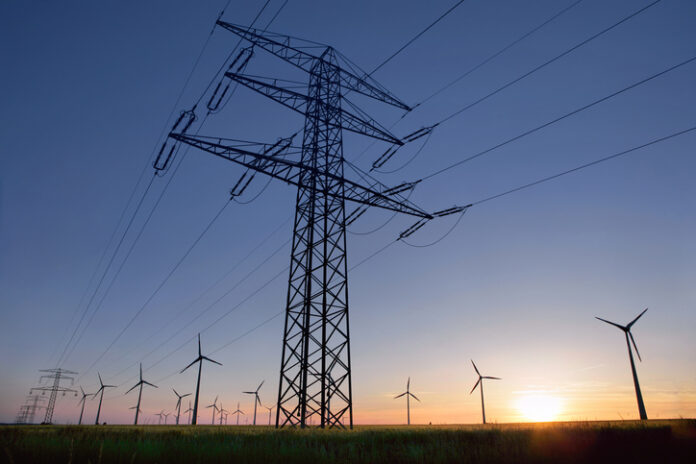Michigan Gov. Gretchen Whitmer (D) issued Executive Order 2020-182 establishing the “MI Healthy Climate initiative.” The order directs executive agencies under Whitmer’s control to enact policies and programs which will reduce greenhouse gas emissions in the state 28 percent below 1990 levels by 2025, and make the state carbon-dioxide-neutral by 2050.
Vague Plans, No Cost Estimates
The heads of the agencies charged with imposing the carbon dioxide reductions Whitmer demanded in her September 25 EO, appeared on a video conference call with the media on September 28 to discuss the plan. Those attending included, Liesl Clark, director of the Department of Environment, Great Lakes, and Energy (EGLE); Dan Eichinger, director, Department of Natural Resources; Rachael Eubanks, state treasurer; and Dan Scripps, chair, Michigan Public Service Commission. EGLE Director of Communications Hugh McDiarmid moderated the conference.
Although every one of directors who spoke on the call indicated they supported radically reducing carbon dioxide emissions as Whitmer is demanded, and claimed Michigan could obtain Whitmer’s 2050 carbon-dioxide-neutral goal, when asked by reporters what types of steps they might take to reduce emissions, none of the directors could name a concrete action they were considering implementing.
They were equally vague concerning what Whitmer’s EO might cost Michigan residents, and the state itself, to implement and maintain the program, or how it would be paid for, when asked by The Center Square reporter Bruce Walker, in an email.
“Actually, the state budget office would be best suited to address that question,” Eubanks said. “Unfortunately, I don’t think they have representation here, but perhaps…if any of the other directors that work more closely with the area have a sense of cost and how that might impact the state budget.”
Scripps also said he had no idea what the program might cost or what impact it would have on the state budget.
Plan Will ‘Squander’ Billions
Although he had yet to crunch the numbers on Michigan’s program, Isaac Orr, a policy fellow with the Center of the American Experiment, told The Center Square his analysis for a similar carbon dioxide-neutral adopted in Minnesota showed it would cost the state billions. Orr continued there was no reason for believing the costs of Michigan’s program would be any less.
“Gov. Whitmer will squander more than $100 billion on wind turbines and solar panels that will be scrap metal in 25 years,” Orr told The Center Square.
H. Sterling Burnett, Ph.D. (hsburnett@heartland.org) is the managing editor of Environment & Climate News.



























Heartland fails to mention two of the most important reasons–mineral supply and health hazard–preventing a converting to all-electric, carbon-free electric supply is this: The mineral resources known or unknown (including undiscovered) of copper, molybdenum, silver, cobalt and rare earth elements, do not exist anywhere in the world. Cost and technology is not an issue but rather the metals and non-metals in any form either mined or unmined do not exist. Furthermore, after the current large operating mines in Arizona, New Mexico and Utah exhaust their resource to supply renewables, there will not be a state willing to open new mines. No state is willing to meet the challenge of this enormous supply need. As I write all environmental groups are expending all possible efforts to block approvals of mines proposed in Idaho and Alaska. The demand for only copper, a metal need that is greatest, to achieve a feat of renewable electrification of the U.S. is not large enough from even the largest producer of copper in the world, Escondida in Chile and other large mines in the world. So the issue is not willingness but lack of supply of raw materials.
My calculations in a paper presented in 2019 in Seattle show that only a handful of states can be electrified using renewable electricity before the mineral supply of known and undiscovered mineral resources from mines is exhausted. If wind turbines are expected to provide supply, the area needed to deploy wind turbines for just this State’s electricity would consume all of the area of several counties in Washington State’s 39 counties and an area that far exceeds all of the urban-suburbanized area. Taking of land by eminent domain would be required and with the result that people cannot occupy the area where wind turbines operate due to the health hazard caused by infrasound and low frequency sound emitted when the wind turbines operate.
The article by Tom Tanton is important but he seems unaware of these points. The result of renewable deployment will be, as the operating record of wind turbine generation in this state has shown, that electricity that cannot support society or business because it is unaffordable even for the middle class, inadequate and unavailable except for only a few hours a week. Perhaps this is the reason it is wanted as it will lead to a destruction of society.
Sir, in a short piece one can only cover so much ground.
Heartland is well aware of the limits of renewable energy and the harmful economic impact of trying to expand its use. See, for example, https://www.heartland.org/publications-resources/publications/research–commentary-heartland-brief-details-how-the-green-new-deal-would-be-an-environmental-disaster, or https://www.heartland.org/publications-resources/publications/research–commentary-mining-expansion-necessary-for-green-new-deal-would-devastate-the-global-environment.
And we have highlighted the impossibility of the physics of replacing all power with electricity by publicizing this study: https://www.heartland.org/publications-resources/publications/the-new-energy-economy-an-exercise-in-magical-thinking.
Hope this satisfies some of your concerns.
Sterling: Thank you. I don’t catch all of your great works so appreciate the alert about these articles.
Perhaps you could support the Midas Gold Mine in Idaho I mention. Today is the last day to provide comment at…..https://midasgoldcomments.com/
Also you can get more information at…Don’t hesitate to contact us at community@midasgoldinc.com.
The great benefit in the proposed mine, if approved, is they will clean up the legacy of waste of past mining at the site.